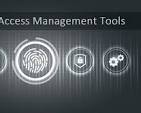Unlocking Secure Access: Navigating Identity Management with SailPoint
The Power of Identity Management with SailPoint
In today’s digital age, where data breaches and cyber threats are on the rise, effective identity management has become a critical priority for organisations. SailPoint is a leading provider of identity management solutions that help businesses secure their digital assets, manage user access, and ensure compliance with regulations.
Key Features of SailPoint Identity Management:
- Identity Governance: SailPoint offers comprehensive identity governance capabilities that enable organisations to define and enforce access policies, detect and mitigate risks, and streamline compliance processes.
- Automated Provisioning: With SailPoint’s automated provisioning features, businesses can efficiently provision and de-provision user access across various systems and applications, reducing the risk of unauthorised access.
- Role-Based Access Control: SailPoint allows organisations to implement role-based access control strategies, ensuring that users have the appropriate level of access based on their roles and responsibilities within the organisation.
- Identity Analytics: By leveraging advanced analytics capabilities, SailPoint helps businesses gain insights into user behaviour, identify anomalies or suspicious activities, and take proactive measures to enhance security.
- Compliance Management: SailPoint simplifies compliance management by providing automated tools for monitoring access controls, generating audit reports, and demonstrating compliance with regulatory requirements.
The Benefits of Using SailPoint for Identity Management:
SailPoint’s identity management solutions offer several benefits to organisations looking to enhance their security posture and streamline access management processes:
- Improved Security: By centralising identity management processes and implementing robust access controls, organisations can strengthen their security posture and reduce the risk of data breaches.
- Enhanced Efficiency: Automation features in SailPoint streamline user provisioning processes, reduce manual errors, and improve operational efficiency.
- Better Compliance: With built-in compliance tools and reporting capabilities, organisations can easily demonstrate compliance with industry regulations and internal policies.
- User Experience: SailPoint’s user-friendly interface makes it easy for administrators to manage user identities effectively while providing a seamless experience for end-users.
In conclusion, SailPoint offers a comprehensive suite of identity management solutions that empower organisations to protect their digital assets, manage user identities effectively, and achieve compliance goals. By leveraging SailPoint’s advanced features and capabilities, businesses can navigate the complex landscape of identity governance with confidence.
Eight Essential Tips for Optimising Identity Management with SailPoint
- Implement role-based access control for efficient identity management.
- Regularly review and update user permissions to maintain security.
- Utilise automated provisioning and deprovisioning processes to streamline operations.
- Enforce strong password policies to enhance authentication measures.
- Integrate SailPoint with other systems for seamless identity governance.
- Monitor user activity and behaviour for potential security threats.
- Provide regular training on identity management best practices to employees.
- Conduct periodic audits to ensure compliance with regulations and policies.
Implement role-based access control for efficient identity management.
Implementing role-based access control is a fundamental tip in leveraging SailPoint for efficient identity management. By defining access permissions based on users’ roles and responsibilities within the organisation, businesses can ensure that individuals have the appropriate level of access to resources and systems. This approach not only enhances security by reducing the risk of unauthorised access but also streamlines access management processes, making it easier to assign and revoke access as needed. With SailPoint’s role-based access control capabilities, organisations can enforce least privilege principles, improve operational efficiency, and maintain a strong security posture across their digital assets.
Regularly review and update user permissions to maintain security.
Regularly reviewing and updating user permissions is a crucial tip in identity management with SailPoint. By periodically assessing and adjusting user access rights, organisations can proactively mitigate security risks and ensure that users have the appropriate level of access needed to perform their roles effectively. This practice not only enhances security but also helps in maintaining compliance with regulatory requirements by aligning user permissions with business needs. With SailPoint’s robust identity governance capabilities, organisations can streamline the process of reviewing and updating user permissions, ultimately strengthening their overall security posture.
Utilise automated provisioning and deprovisioning processes to streamline operations.
By utilising automated provisioning and deprovisioning processes with SailPoint’s identity management solutions, organisations can streamline their operations and enhance efficiency. Automated provisioning enables swift and accurate allocation of access rights to users across systems and applications, reducing manual errors and ensuring timely access to resources. On the other hand, automated deprovisioning facilitates the prompt removal of access privileges when users no longer require them, mitigating the risk of unauthorised access. These streamlined processes not only improve operational efficiency but also contribute to enhanced security by maintaining tight control over user access rights throughout their lifecycle within the organisation.
Enforce strong password policies to enhance authentication measures.
Enforcing strong password policies is a crucial tip in identity management with SailPoint. By requiring users to create complex passwords that include a mix of alphanumeric characters, symbols, and are of a certain length, organisations can significantly enhance their authentication measures. Strong passwords act as the first line of defence against unauthorised access and help mitigate the risk of password-related security breaches. With SailPoint’s identity management solutions, implementing and enforcing robust password policies ensures that user accounts remain secure and protected from potential threats in today’s increasingly digital landscape.
Integrate SailPoint with other systems for seamless identity governance.
Integrating SailPoint with other systems is a valuable tip for achieving seamless identity governance within an organisation. By connecting SailPoint’s identity management solutions with existing systems and applications, businesses can establish a unified approach to managing user identities, access controls, and security policies. This integration enables a more holistic view of user activities across the IT environment, streamlines access provisioning processes, and enhances overall security posture. By leveraging the interoperability of SailPoint with other systems, organisations can ensure consistent enforcement of identity governance policies and maintain compliance standards effectively.
Monitor user activity and behaviour for potential security threats.
To enhance security measures and mitigate potential risks, it is crucial to monitor user activity and behaviour within the SailPoint identity management system. By closely tracking user interactions, access patterns, and behaviour anomalies, organisations can proactively identify and address security threats before they escalate. Monitoring user activity not only helps in detecting unauthorised access attempts but also enables quick response to any suspicious behaviour, ultimately strengthening the overall security posture of the system. With SailPoint’s robust monitoring capabilities, businesses can stay vigilant against evolving cyber threats and safeguard their critical digital assets effectively.
Provide regular training on identity management best practices to employees.
It is essential to provide regular training on identity management best practices to employees when utilising SailPoint solutions. By educating staff members on the importance of secure identity management, organisations can enhance overall security posture and reduce the risk of data breaches. Training sessions can cover topics such as password hygiene, access control policies, and recognising phishing attempts. Empowering employees with the knowledge and skills to navigate identity management effectively not only strengthens organisational defences but also fosters a culture of security awareness across the workforce.
Conduct periodic audits to ensure compliance with regulations and policies.
To maintain a robust identity management system using SailPoint, it is crucial to conduct regular audits to verify adherence to regulations and internal policies. Periodic audits help organisations identify any deviations from established access controls, detect potential security risks, and ensure compliance with industry regulations. By reviewing user access rights, permissions, and activities on a regular basis, businesses can proactively address any discrepancies, strengthen their security posture, and demonstrate a commitment to regulatory compliance. Conducting these audits with SailPoint’s identity governance tools can streamline the process and provide actionable insights for enhancing overall identity management practices.



